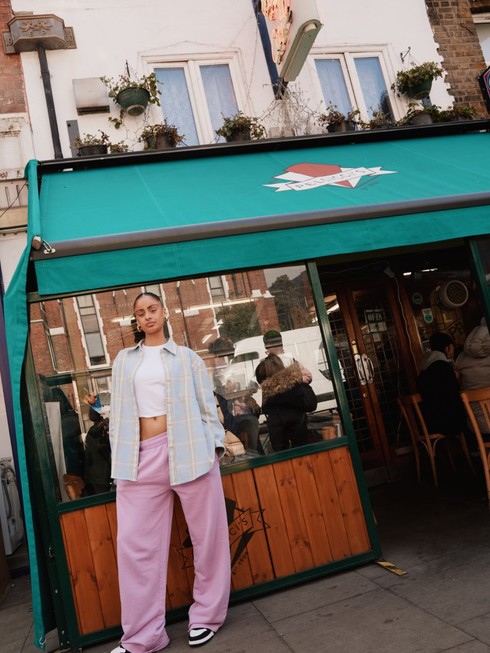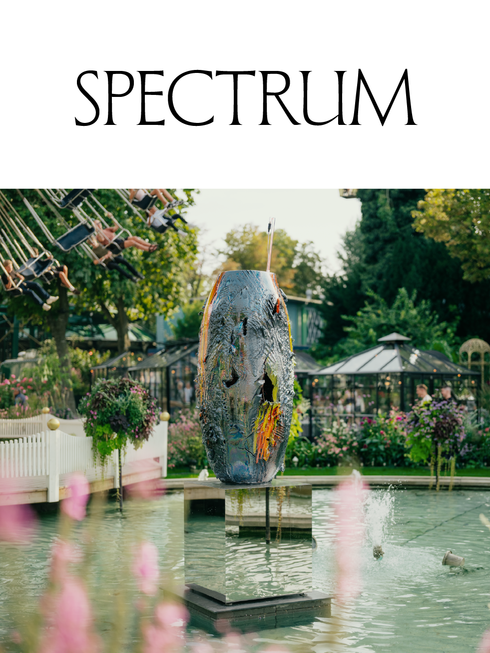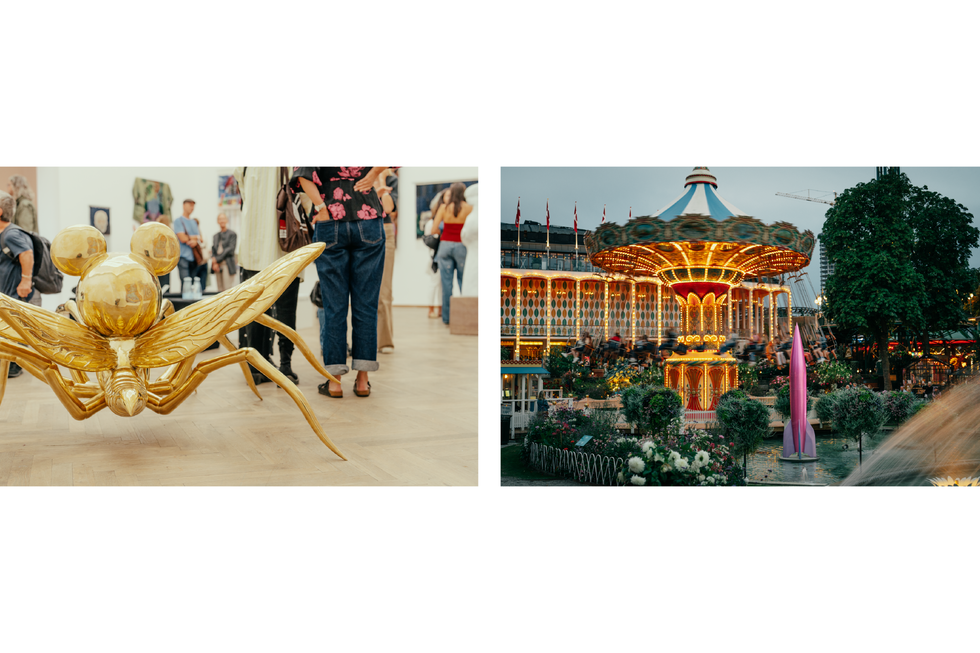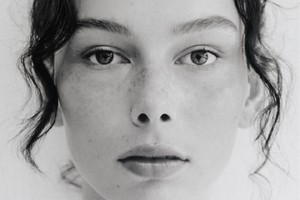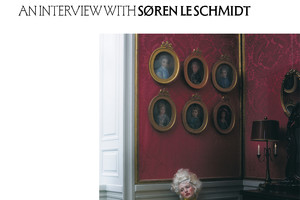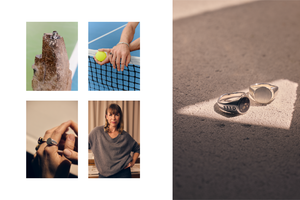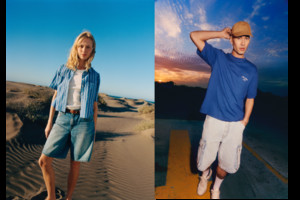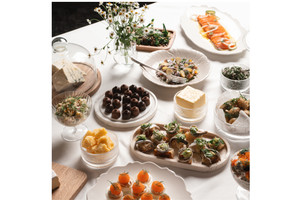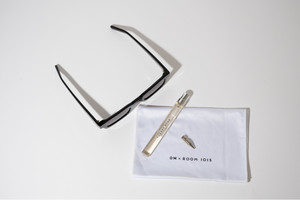CHART, the Nordic art fair, has become a cornerstone of the area’s contemporary art scene since its beginnings in 2013. What began as a collaborative e!ort among five galleries to showcase Nordic art has evolved into a dynamic, multi-faceted event that transcends the traditional art fair model. Today, CHART not only highlights leading and emerging galleries from the Nordic region but also integrates a rich public programme of performances, talks, and exhibitions, all aimed at making contemporary art accessible to a wider audience.
In 2023, CHART welcomed an impressive 22,000 visitors, reflecting its growing influence and appeal. As Julie Quottrup Silbermann, Director of CHART Art Fair, explains, “We aim to be more than just an art fair. The fair itself features 28 to 40 galleries, but around it, we’ve expanded into a larger public programme that includes performances, music, and talks - all free of charge.”
CHART is dedicated to fostering collaboration among galleries, rethinking public spaces, and prioritizing sustainability, all while creating an inclusive platform for Nordic art. As Silbermann says, “We’re not just building an art fair; we’re building a community.”
Natalia Muntean: How has Chart evolved since it started in 2013?
Julie Quottrup Silbermann: Chart is an annual art event that began in 2013, created by five galleries to showcase the Nordic art scene. Initially focused on collaboration among Nordic galleries, the format evolved three years ago to include a broader program and a partnership with Tivoli Gardens for outdoor exhibitions. Today, Chart invites Nordic galleries to participate, emphasising that it is more than just an art fair. The event features performances, emerging musicians, and a talks program with discussions relevant to contemporary art, all free to the public. Additionally, collaborations with other institutions allow visitors to explore new exhibitions and attend previews during the event.
NM: The Nordic region is often seen as progressive and forward-looking - how does Chart reflect or challenge these ideas?
JQS: We aim to present a broad view of Nordic art by inviting both established and emerging galleries from the region and beyond. There’s a growing trend of galleries balancing art and design, with artists creating functional sculptures, particularly in small, artist-run spaces like Coulisse Gallery and Public Service Gallery in Stockholm. This reflects an increasing interest in unique artworks for personal collections. While emerging galleries are thriving, mid-tier ones face challenges, while established galleries have a steady audience. Since Chart’s inception, both invited and self-nominating galleries have participated. I visit Nordic capitals annually to discover new spaces and gather recommendations from established galleries, ensuring we showcase the most exciting new Nordic talent at Chart.
NM: What do you think is the role of CHART in shaping the Nordic art market?
JQS: For the participating galleries, it’s an important part of their year to take part in a fair that specialises in the Nordics. We create a community around it, and it’s not just about the fair itself. Throughout the year, participating galleries present their exhibitions, and we collaborate on art calendars. We also reach out to art professionals, organising online curator meetings five times during the spring to introduce galleries to them. I feel the galleries are part of this community, and they’re introduced to art professionals in a meaningful way. I hope and I feel we’re giving a lot back to the galleries by fostering collaboration and mutual support. This is reflected in the fair’s design. When you enter, you don’t see long aisles or booths. Instead, you step into rooms that might feature three galleries at once, creating a cohesive exhibition experience. This setup allows art professionals, collectors, or firsttime visitors to engage openly with the galleries. You’re essentially walking in and out of different gallery spaces seamlessly, without the barriers of traditional booths.
NM: This is the last year for Chart Architecture why did you decide this would be the last year?
JQS: CHART Architecture has been running for ten years. Over this time, we’ve invited young architects to create pavilions in the courtyard, and it’s been very inspiring to see their creative, innovative designs. But after ten years, we felt it was time to try something new. This year, we’re introducing CHART Public and it’s essentially an open call. We’re asking architects, designers, and artists to submit proposals on how to create a more inclusive, creative, and aesthetically engaging public space in front of Charlottenborg.
The goal is to rethink how public spaces can be more than just places we pass through - how they can become areas where people want to gather, sit, talk, and connect. We’re also exploring how this space can serve as a way finder, guiding visitors from the Kingsway in front of Charlottenborg through the courtyard and into the art fair.
NM: And what about the outside exhibition at Tivoli?
JQS: This is also going to be the last time for CHART at Tivoli. It’s been such an exciting project and so much fun for the artists to put up sculptures or installations. For instance, last year, we had a sculpture standing in one of the fountains, an artist created a project for the roller coaster, and we showed art films on big screens next to the huge stage where they have concerts. This year, we’ve also started inviting galleries to participate, so I have absolutely no idea what to expect. There are so many places around the gardens that we can use, and I’m really trying to encourage all the galleries and their artists to come up with art pieces that will be placed throughout the garden. When you walk around, it’s a 180-year-old amusement park with flower beds, fountains, roller coasters, and restaurants, and then, suddenly, you come across a contemporary art installation placed in one of the classic settings. The openness of an institution like Tivoli to collaborate in this way has made it a very fun project. For the audience, it’s unexpected because they go to Tivoli expecting roller coasters and then see a contemporary art installation next to it. It’s something they might never have thought about.
NM: Speaking of this year, are there any particular trends or themes you’re noticing?
JQS: I’m excited to see how the open call for the courtyard evolves and what ideas will come in. I’m also looking forward to our “Start Collecting” exhibition with CHART. This initiative started two years ago, invites galleries to submit artworks priced at a maximum of 3,000 euros. In a space called The Chapel, we present affordable artworks from both emerging and established artists, aiming to spark conversations about art collecting. Many are interested in collecting but think it requires a fortune. We want to show that unique art can be accessible at lower price points. Attending an art fair is a great way to explore various galleries and styles. It helps you discover your own preferences, whether you’re drawn to paintings, photographs, or conceptual art. At an art fair, you’ll encounter works that surprise you and others that you can’t resist.
NM: What advice would you give to someone attending CHART for the first time?
JQS: Be very open to everything you see and be curious. Don’t hold back in asking questions to the galleries, they want to talk about the artworks they’re presenting. They’re there with a concept and a submission from the artist, and they want to share the artist’s stories and the concepts behind the works. You’re being introduced to so many different galleries, so take advantage of that.
NM: Sustainability is an important focus for art fairs globally. How is CHART addressing this issue?
JQS: Having a sustainable strategy is essential for institutions and industries today. Last year, we joined the Gallery Climate Coalition (GCC) to actively report our carbon footprint and outline our sustainability plans. We take action by reducing printing, boosting social media visibility, and collaborating only with local food and drink partners. Instead of building new structures, we utilise existing ones. At the fair, we use glasses instead of plastic and have partnered with a transport company for shared transportation. We’re also organising meetings with the GCC to help our galleries adopt sustainability initiatives and focus on the Nordic region rather than flying in international galleries or artists. It’s important for CHART to be aware of its local footprint and support the Nordic community. We encourage collectors to plan purchases sustainably instead of opting for overnight shipping.
NM: What is the biggest challenge in organising Chart?
JQS: The biggest challenge is that it takes a year to build up the fair. As a non-profit organisation, we really depend on funding, sponsorships, and partnerships. Without them, we can’t exist. Of course, our most important clients are the galleries. Without them, we wouldn’t exist either. Keeping the galleries as our priority is essential. One of the biggest challenges is being a non-profit organisation while growing and securing partners and sponsors every year.
NM: We’ve talked about CHART in the context of the Nordics. What do you see as CHART’s role in the broader contemporary art ecosystem?
JQS: I see the Nordic art scene as very international. Artists represented by the galleries often go abroad, whether to study, participate in gallery shows, or exhibit in museums. I feel we have a very international art scene, and the galleries need to go beyond the Nordics to present their artists. I see a growing interest in the Nordic art scene, and it’s developing well, especially for emerging artists. However, it’s also a tough time due to the current economic situation.
NM: Looking ahead, what are CHART’s ambitions to further sustainability and diversity within the programme and the Nordic art scene?
JQS: Of course, we want to be more visible in the Nordics. Right now, we’re focusing a lot on art professionals, combining them with the galleries and creating a network where curators, museum people, and others can come to the fair, meet the galleries, and connect with artists. For us, it’s about creating a platform where people in the industry can network. Another part of it is to remain as open and inclusive as possible for a broader audience.

